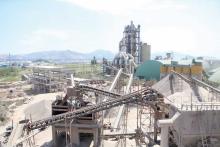
While it was understandably a time to celebrate the years of hard work that had led to the creation of
The home truths were delivered by David Phillips, MD of Off Highway Research (OHR), the leading industry research consultancy, during LiuGong’s Global Construction Machinery Technology Forum held in the heart of the new Global R&D Centre. In his presentation, Phillips revealed how annual average Chinese construction equipment sales for the period 2015-19 are forecasted to be around 160,021 – almost exactly half of the 319,399 sales achieved in the years 2010-14.
Digging deeper into this stark headline figure, Phillips showed how wheeled loader sales are tipped to plummet to an annual average of 64,000 2015-19 – from 162,782 in the period 2010-14. Crawler excavator sales are, said Phillips, also expected to average 58,800 from 2015-19, compared to 113,244 in the period 2010-14.
Going hand in hand with the current and tipped continuing slump in Chinese construction equipment sales has been a huge rise in unit production levels – creating significant over-capacity. Latest OHR figures show the annual average of units produced in the years 2010-14 at 356,793 - compared to 225,153 over the 2005-9 period.
Looking at the key challenges and opportunities facing the Chinese domestic market, Phillips said there was a need to cut production over capacity by 50% due to lower demand. He said OEMs had in the past been overly reliant on local government backing, a state of affairs which, he said, needed to change. Chinese firms also, he said, needed to focus on profitability, not just market share. This he nicely equated to Profits = Sanity; Volumes = Vanity. Phillips also said the climate of easy financing for construction equipment purchases needed to stop – warning the LiuGong attendees about how this practice had damaged the US and European construction equipment sector in previous years.
With domestic demand facing such a stark decline, it’s no surprise that major Chinese OEMs such as LiuGong are keen to invest in their export capabilities. But again Phillips warned that, currently, most international markets will buy Chinese products on price, rather than because they want to. However, Phillips did agree that exports are, if backed up by quality customer support, increasingly the fundamental growth driver, offsetting weak domestic demand.
It will be fascinating to see whether major and smaller but ambitious Chinese OEMs take on board some of the thoughts of leading industry research firms such as OHR over the coming years. The fact that LiuGong chairman and president Zeng Guang’an used part of his speech at the world’s biggest construction equipment exhibition this year, INTERMAT 2015 in Paris, France, to highlight how his company had already started to adapt to the ‘new normality’ of lower global construction equipment demand, indicates the firm has a head start on some of their rivals in adopting a more suitable contemporary and future business model.






